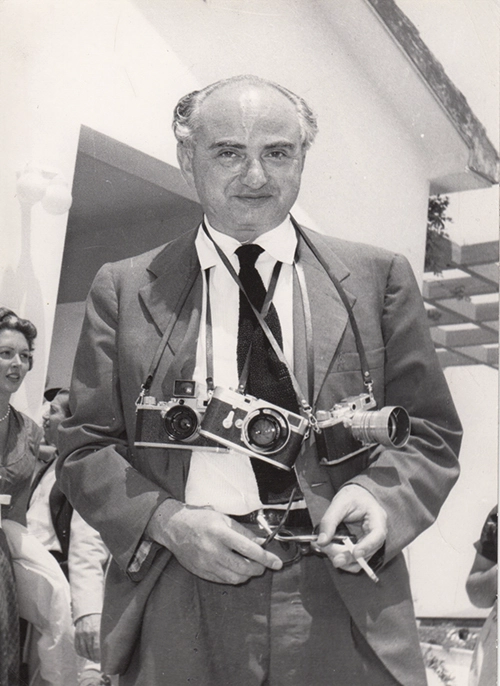Tag:france
David Seymour (Chim) was a Polish-born American photojournalist and co-founder of Magnum. Seymour is best known for his empathic and moving images of people, especially children, and for his work covering the Second World War and other conflicts. He also photographed celebrities, politicians, and socialites working for magazines such as Life, Vogue, and Harper’s Bazaar. Seymour believed the medium of photography could awaken the public conscience and used his skill to tell stories photographically.
We are only trying to tell a story. Let the 17th-century painters worry about the effects. We’ve got to tell it now, let the news in, show the hungry face, the broken land, anything so that those who are comfortable may be moved a little
David Seymour (Chim)
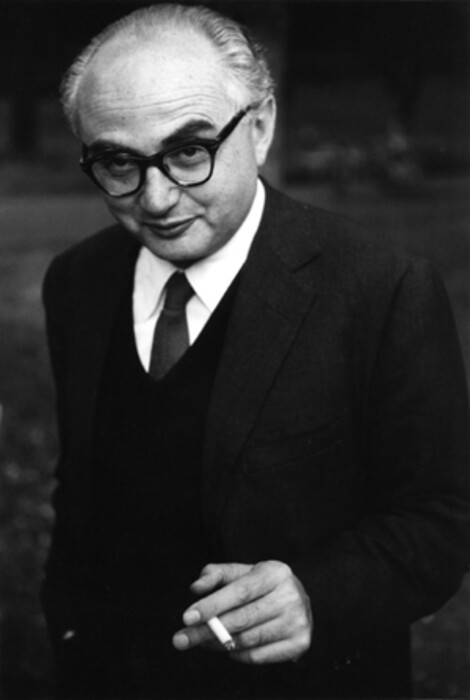
Early Life
He was born Dawid (Chim) Szymin on November 20, 1911, in Poland to Polish Jewish parents Regina and Benjamin Szymin. His parents were prominent Yiddish and Hebrew book publishers and owners of a bookstore that was a gathering point for Warsaws Jewish intellectuals. Chim was a talented pianist and linguist, fluent in eight languages and studied graphic arts and printing technology in Leipzig. However, with the increasing political and economic unrest at home, he decided to continue his studies in Paris. While studying at Sorbonne University in 1932, he developed an interest in photography.

By 1934 he abbreviated his surname and began stamping his prints ‘Chim’ (pronounced shim) as it was easier to pronounce and more “commercial”. He became friends with Robert Capa and Henri Cartier-Besson while they were all working at the RAP picture agency. All three shared an apartment in Paris for a time, and their bathroom doubled as a darkroom.
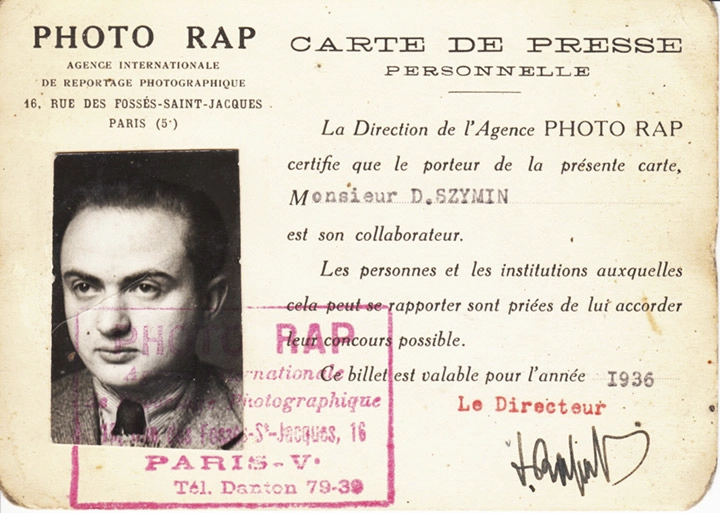
In the late 1930s, Chim covered the Spanish Civil War. His images gained widespread attention, particularly those that portrayed life behind the lines and the impact of the war on the people of Barcelona, and they were published in Life magazine. In addition, the new French weekly Match assigned Chim and writer George Soria to photograph the defeated Republicans fleeing Spain for France. He also covered the SS Sinaia voyage in 1939, the first ship to carry Spanish refugees to Mexico.
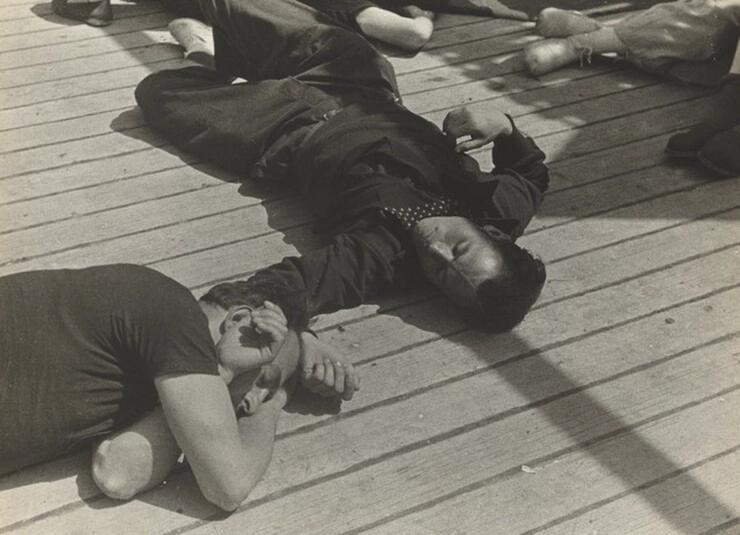
The War Years
In 1939 while he was covering the Spanish civil war, Chim realised it wasn’t safe to return home, so he emigrated to the United States. In 1942, he was drafted, and while training in military intelligence as a photo interpreter at Camp Ritchie, Maryland, he became a naturalised U.S. citizen. During his service, he received a bronze star and was discharged with the rank of Second Lieutenant in 1945
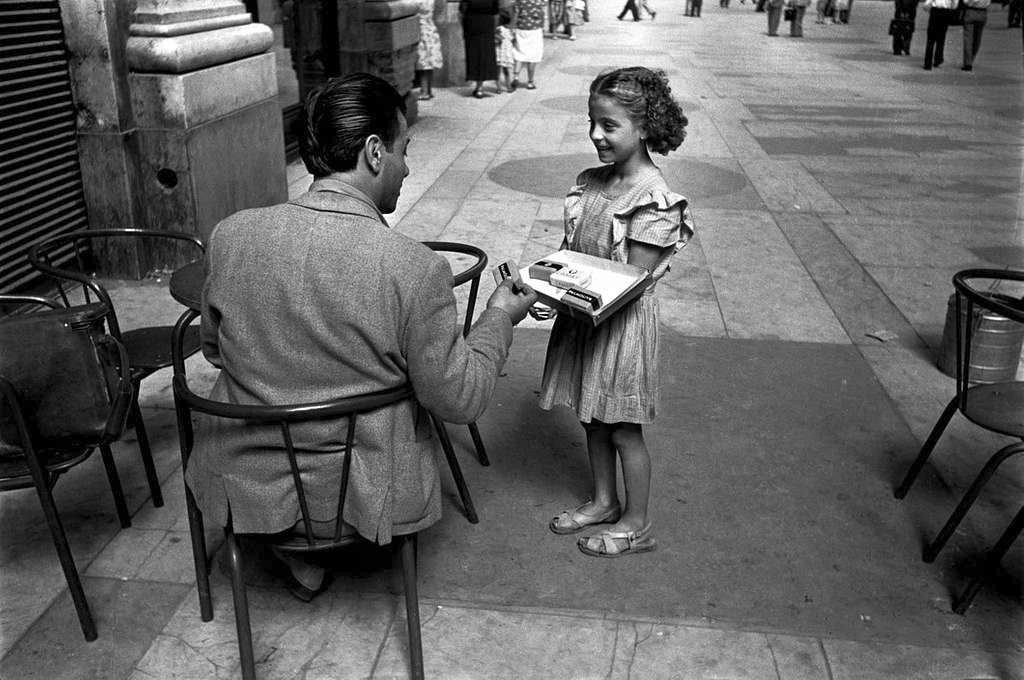
In 1947, Chim, Capa, Cartier-Bresson, George Rodger and William Vandivert founded Magnum Photos, the international photographers’ cooperative agency. Magnum was formed to give photographers control over their own assignments and retain copyrights over their own negatives.
Children of Europe
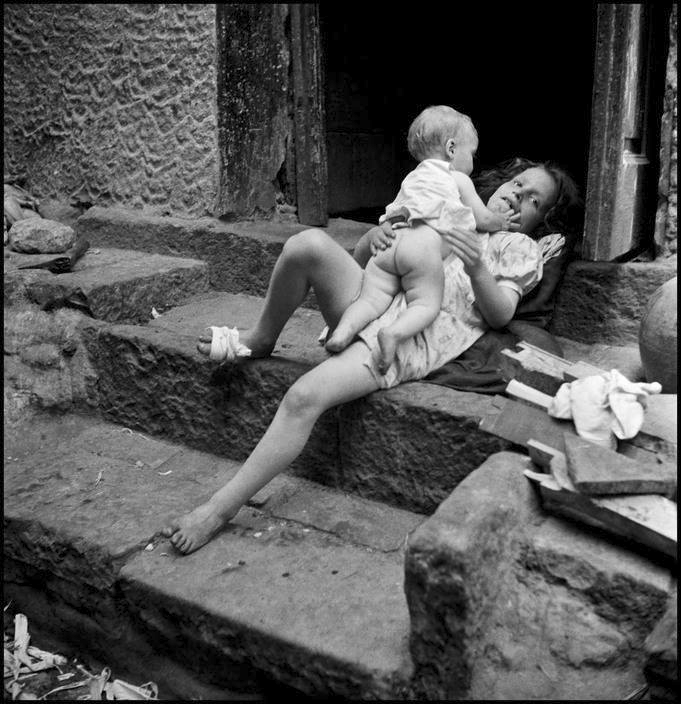
Chim was designated a ‘special consultant’ by UNICEF in March 1948 and was assigned to document the plight of the child survivors of World War II. That year, while on assignment for the United Nations Educational and Scientific Organization (UNESCO), Chim photographed the children orphaned by the war and irrevocably physically and emotionally damaged.
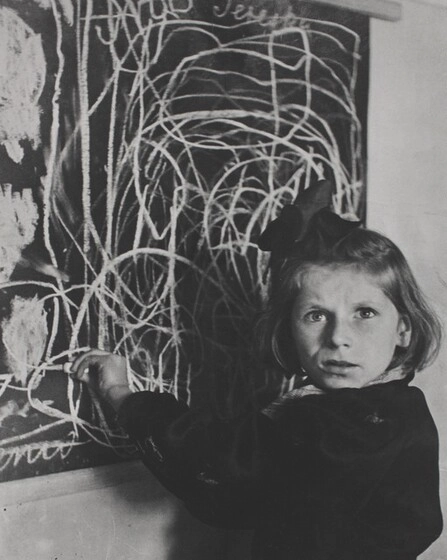
The assignment would take him to five countries. His visit to a school in Warsaw for disturbed children saw him create one of his most famous images. Tereska’s ‘drawing’ on a blackboard of her’ home’ is a nebulous, incomprehensible scribble, indicating her deep trauma. He later turned the images into the critically acclaimed book Children of Europe (1949). While still on assignment with UNESCO, Chim learned his parents, who had remained behind in Poland during the war, were killed by the Nazis when they liquidated the Otwock Ghetto and sent the inhabitants to Treblinka. The Children of Europe series reflected his raw emotions.
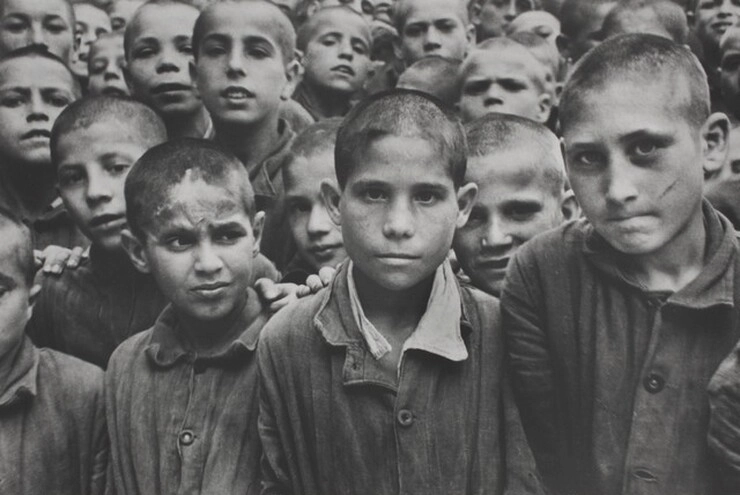
David Seymour (Chim), © David Seymour Estate
Post War
In 1949, Chim moved to Rome. Working on a book on the Vatican, he took over 2,500 photographs, photographing everyone, from workers to the pope during a private audience. Then, in 1951, Robert Capa came up with a large-scale idea – to be handled entirely by Magnum photographers. ‘Generation X’ was about children coming of age after the war. Chim, still in Italy, chose two subjects and, from 1951 to 1955, he photographed traditional religious festivals and processions held in Italian villages. He also made several trips to Israel as the fledgling state was fighting against attacks from neighbouring Arab states. Israel had become extremely important to him, symbolically and emotionally. He saw it as a place of hope for the Jews of Europe.

The 1950s
In 1954 Magnum lost two of its top photographers. Werner Bischof died in a car accident in Peru on May 16, and just nine days later, on May 25, Robert Capa, Magnums president, was killed in Vietnam when he stepped on a landmine.
“My Dear Magnum family, the lump is still in the throat, and the dust not settled yet. The blow is hard, and the reaction slow to come… We have to go on, keep together, and avoid the stunning effects of our sorrow. Maybe through this we will help ourselves, and find strength to keep and develop Magnum—a home for all of us.”
David Seymour
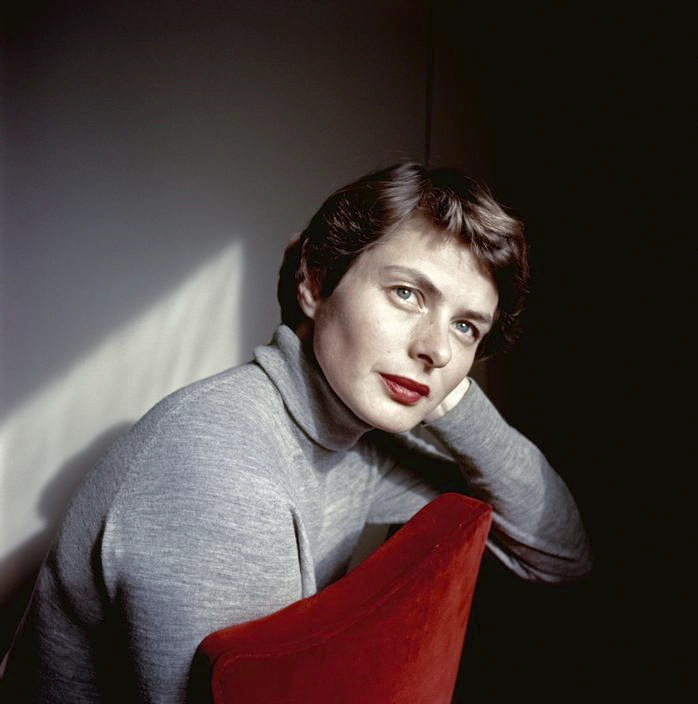
Following Capa’s death, Chim took over the role of President at Magnum. He was also a gifted portrait artist. From 1955-1956, he was the trusted portrait artist of Sophia Loren, Ingrid Bergman and Roberto Rossellini and family, Audrey Hepburn, Joan Collins, Ava Gardner, Kim Novak, Kirk Douglas, Gina Lollobrigida, Rita Hayworth, Irene Papas, Maria Callas, and many others. In addition, he took portraits of writers and intellectuals like Arturo Toscanini and Bernard Berenson.
Death
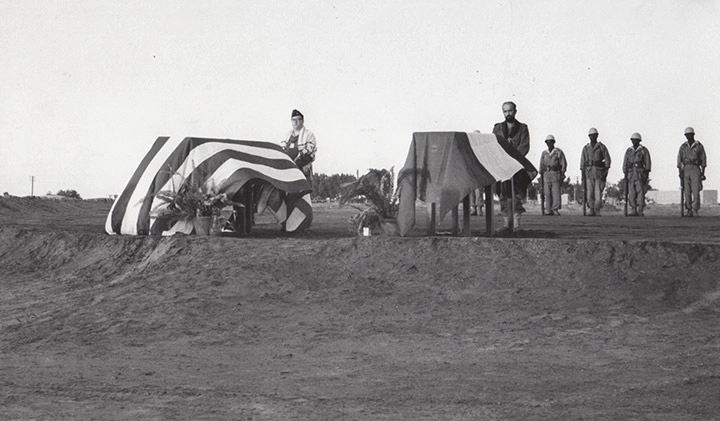
On November 10, 1956, Chim covered the Suez Crisis for Newsweek. He and French photographer Jean Roy were driving to photograph an exchange of wounded soldiers at El Quantara. Tragically they were killed by Egyptian machinegun fire. It was four days after the armistice of the 1956 Suez Crisis, ten days before his 45th birthday.
The island abbey of Mont St Michel had been on my bucket list since I first saw an image of it years ago. So it was definitely on the list when we planned our trip. Mont St Michael is four hours from Paris, so it was a fourteen-hour day on the bus tour between travelling and time on the island.
The island is just a few hundred metres from the mainland and only accessible at low tide. This makes it accessible to pilgrims at low tide but defensible at high tide. Some people still cross to the island across the mudflats in the traditional way of pilgrims hundreds of years ago. Apparently, you need a guide to take you over to avoid the quicksand. (we took the shuttle!)
World Heritage site
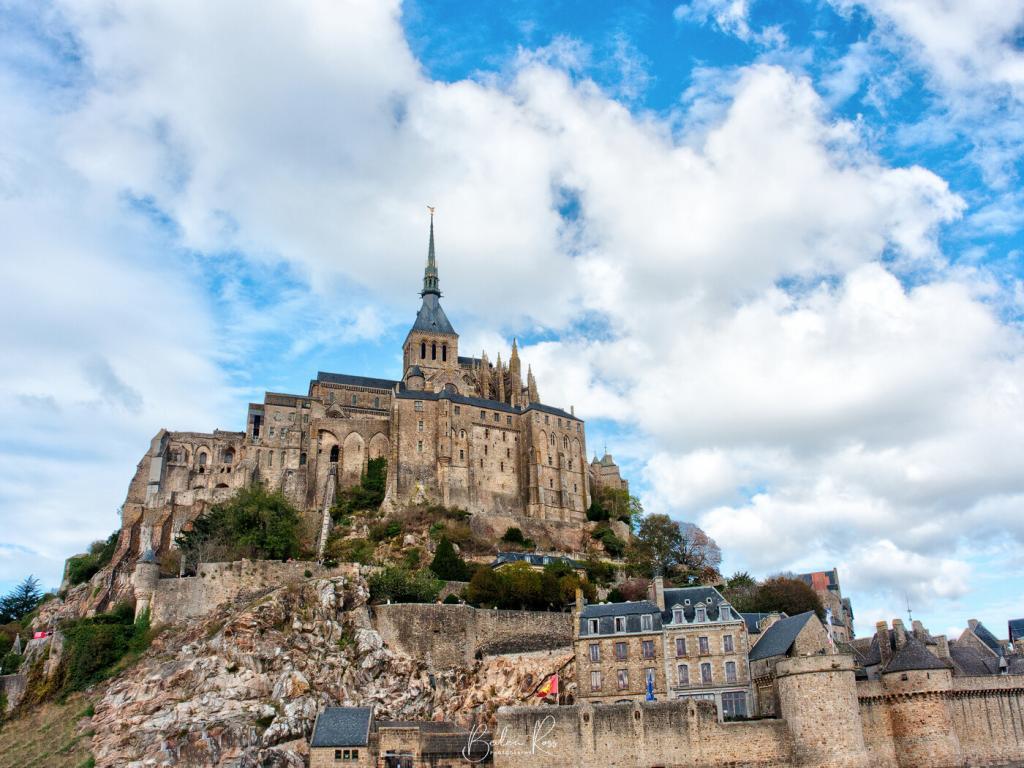
Before constructing the first monastic establishment in the 8th century, the island was called Mont Tombe. According to legend, the archangel Michael appeared in 708 to the bishop of Avranches and instructed him to build a church on the rocky islet. A small church was consecrated just over a year later on 16th October 709. In 966, a community of Benedictines settled on the rock at the request of the Duke of Normandy and the pre-Romanesque church was built before the year one thousand.
With the Hundred Years War outbreak in the 14th century, protecting the abbey behind a set of military constructions became necessary. This enabled it to hold out against a siege lasting 30 years. Mont Saint-Michel and its bay are on the UNESCO list of World Heritage Sites. Over 60 buildings on the island are protected in France as monuments historiques.
Car free island
In 2014 a new causeway was opened that gave access to the island to shuttle buses and pedestrians. The old road covered at every high tide was then removed. However, the area is known for spring ‘super’ tides, and in 2015 the tide was so high it covered even the raised causeway. We arrived around midday and enjoyed a delicious lunch with a pear cider before taking the shuttle bus to the island. No cars are allowed on the island. Even residents must take the shuttle bus from the mainland carpark across the causeway or walk. We all had headphones supplied by the tour company, and the guide supplied loads of info about Mont St Michel. While setting a cracking pace up the 350 steps to the top!


Construction
At the base of Mont St. Michael are shops and houses – the island has a permanent population of 50. Just below the top sits The Merveille (the marvel). Added in the 13th century, its three layered levels culminated in a height of 35m supported by 16 powerful buttresses. The Merveille took 17 years, and each level had different functions. The building of which was an amazing feat of engineering for the time.
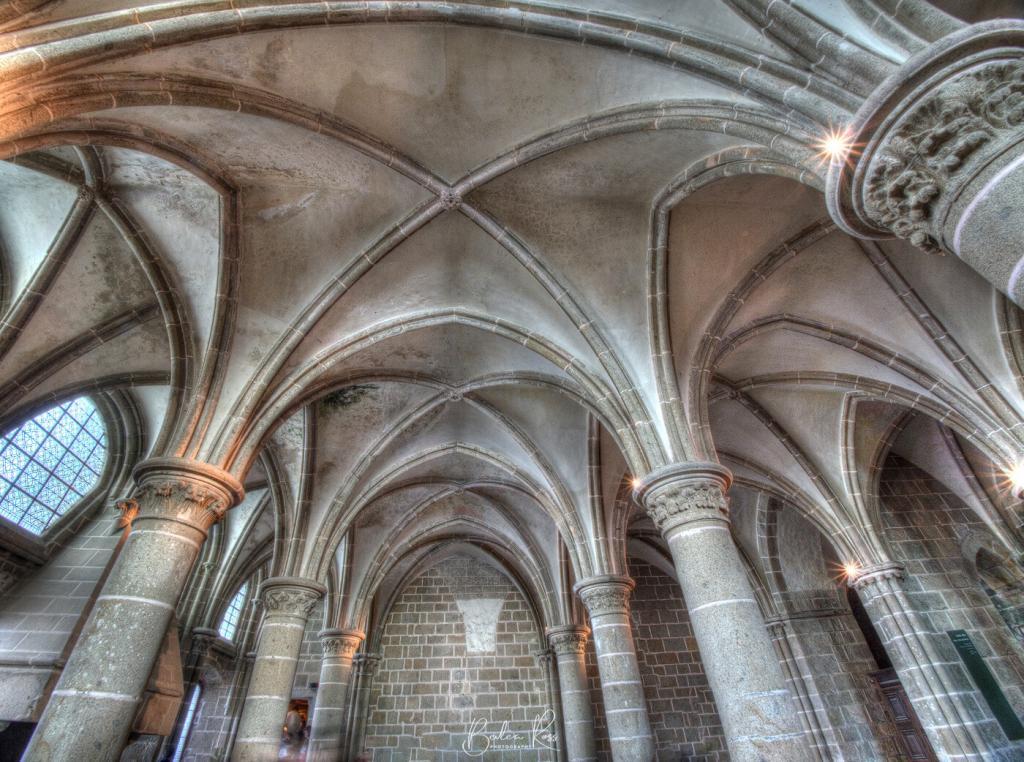
On the ground floor is the cellar for storing food and the chaplaincy for welcoming pilgrims. The second floor contains the dining hall with its imposing fireplaces, reserved for special guests. On this floor is also the so-called “knights” room, the former scriptorium. The “knights” room was also called the scriptorium. For a long time, the scriptorium was thought to have been the place where manuscripts were produced and illuminated. However, it would seem that it was, in fact, used for reading and studying. The final level contained the cloisters and the monks’ refectory.

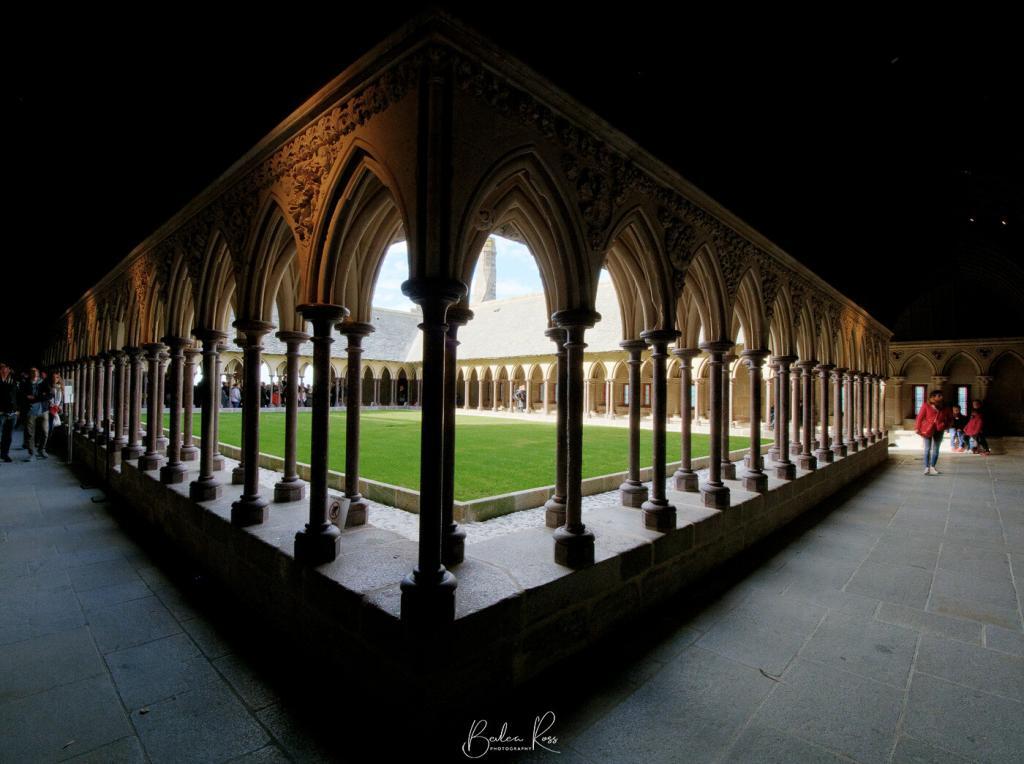
At the very top stands the church – topped with a 32m steeple and a statue of St Michael.



What a Day!
Once at the top, the guide left us to our own devices for a couple of hours. We had to be back on the bus by 4.30 pm. We meandered our way back down (much slower than the going up), taking photos along the way. Boarding the shuttle bus back was problematic as the first one was packed. I couldn’t squeeze on, we were running out of time to get back, so when the second shuttle bus came, we were a bit more aggressive and managed to squeeze on. Fortunately, we returned to our tour bus with about 5 mins to spare. Though being stuck on St Michel overnight wouldn’t be such a bad thing.

The tour bus left Mont St Michel at 4.30 pm. After a 30min stop halfway back to Paris for toilets, food, and drink, we arrived back in Paris around 9 pm. Found a cab. Cabbie spoke only french, we spoke only English. Rue de Rennes merci… confusion… Rue de Rennes. I showed him the address on my phone…. ahhhhh!! Oui, Rue de Rennes… I thought I said that! 10 euros later we were back at our hotel, and I think about ten mins after that I was in bed asleep!
About 12 months ago, a group of us (all amateur photographers) signed on to do a 3-week trip covering Tromso, London, and Paris. The price looked excellent – too good to pass up. Add the lure of northern lights chasing, and we were all keen. But the initial cost proved to be only the beginning. I found there are many hidden costs of planning holidays.
While the price was undeniably great, there were hidden costs. Costs that I didn’t consider as a first-time long-haul overseas trip at the time before I said yes. Things you don’t think to factor in with the glow of excitement over an overseas trip to far-flung places. And no, I don’t mean travel insurance and spending money, which I had budgeted in.

No Regrets (do it all)
Considering the vast distances we are travelling to get there, (35 hrs travelling time Australia to Tromso with three plane changes). Add in the likelihood that, most likely, we are never going back due to distance and cost. Therefore, we all wanted to get shots worthy of bringing home. The last words I wanted on my lips at the end of the trip was “I wish”. I wish I had bought a wide-angle lens. I wish I had the new filters I have been looking at. I wish I had a better/bigger/smaller bag; I wish I had better clothing for the cold; I wish I could have afforded to take that extra tour. I wish, I wish, I wish. You see where I am going.

Gear
As it’s a photographic trip, we have upgraded our camera gear. Three of us have new cameras (two wholly changed over from Canon to Olympus. And yes, add all the new lenses that go with that. All of us bought extra batteries to cope with the cold. Some have new filters, others new camera bags, additional memory cards, lighter carbon fibre tripods, new smaller lighter laptops and externals to back up the images, and bigger camera bags to fit in snacks, water, and wet weather gear. The shopping went on and on and on and on.

Clothing
Also burning through the credit cards and savings was clothing. It’s forecast to be between 1C – 5C in Tromso. So thermal underwear, snow boots, waterproof hikers and photography gloves were on the shopping list. We also bought photographers gloves, designed to keep the hands warm but engineered work the cameras were purchased.
Add down coats, thermal hats, snow socks, and windproof, waterproof pants. London and Paris will be a little warmer. We had two nights booked out northern lights chasing. Plus day trips out on arctic wildlife spotting and night trips elsewhere, the arctic gear was the first thing we ordered

Hot Hands and Toes
Hot Hands (little heat-activated pouches that give off heat for 8-10 hours) have been purchased and stockpiled over the winter months to take with us. Sorry if you went to chemist’s warehouse and there was none left. But we needed them? One hot hand in each pocket to keep batteries warm (they go flat quicker in the cold), plus one in each glove. Buy packing cubes to find things when I need them instead of going through my suitcase like police with a search warrant. Add a couple of small laundry bags and cubes!

Electronics
Travelling overseas, everyone realises you need special power adapters. Travelling to Europe and the UK, we need one for each country. Add a powerboard to simultaneously charge camera batteries, watches, iPhones, iPods, and laptops. A power bank for charging phones on the go and recharging batteries quickly after being out shooting all day before going out again most of the night. Add a double camera battery charger.
Tours
Since we had some free days and followed on from the ‘no regrets’ mantra, we also planned to see and do as much as humanly possible while there. Cram as much in, see as much as we can, photograph everything, sleep when we get home. So, we needed to fill our ‘free days’ with tours, right?

In Tromso, add an arctic wildlife experience and add another night of northern light chasing to maximise our time. Add tours in London to Cornwall, white cliffs of Dover, Cotswolds, Canterbury Cathedral, Westminster Cathedral, Tower of London, Alice in Wonderland High Tea. in Paris, add a skip the line Eiffel tower to the summit and Mont St Michel. Stay an extra few days, travel to Germany, and take the train rather than fly. It’s all about the experience, right?
Add tours to the Castles and another to Salzburg, Austria. Oh, excellent, look, another $2k gone. Tetanus shot (doctor’s orders). Oyster cards, global sim, convert Aussie dollars to cash in three currencies, so we have some folding stuff on landing. Letter from the doctor for medications. New packets of said medications have to stay in their boxes and not be in pillboxes.

Forgotten Anything?
Ummmm, I don’t think I have, but despite that, we have more gear, backups, and planning than Roald Amundsen or Scott of the Antarctic. Despite covering every eventuality I can think of, I am confident when I get on the plane. I will remember something I should have bought or packed!
